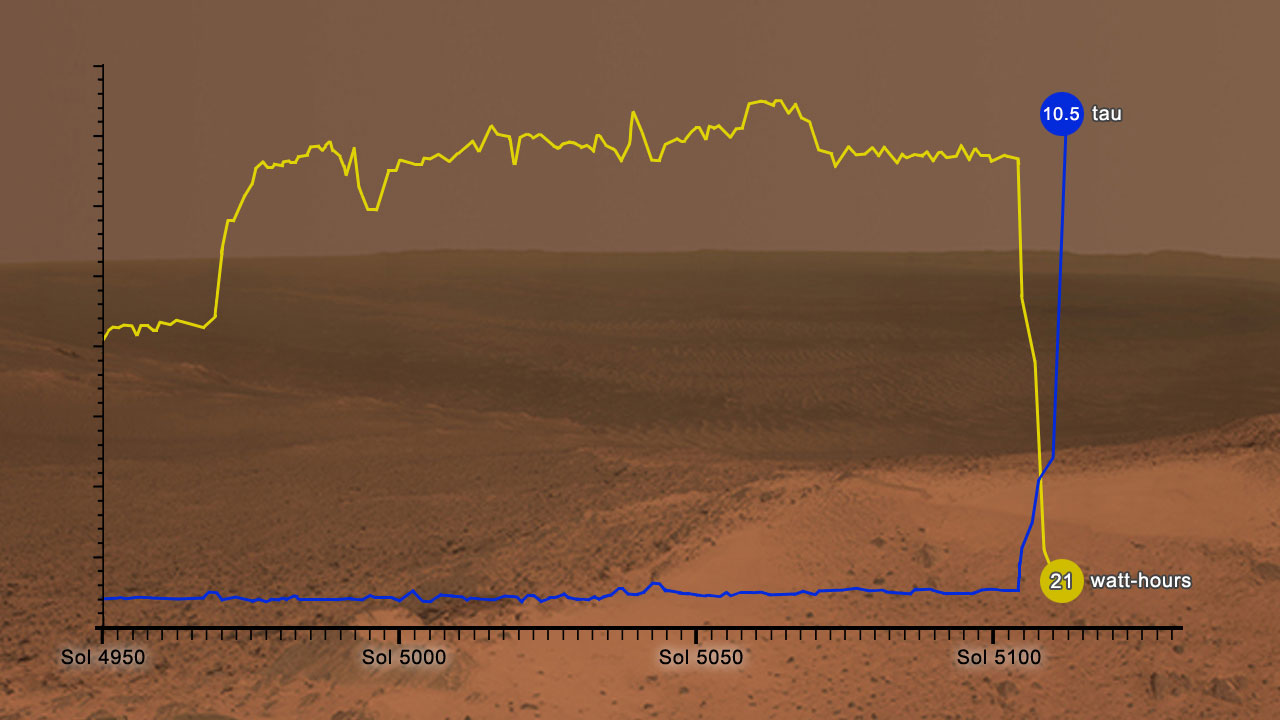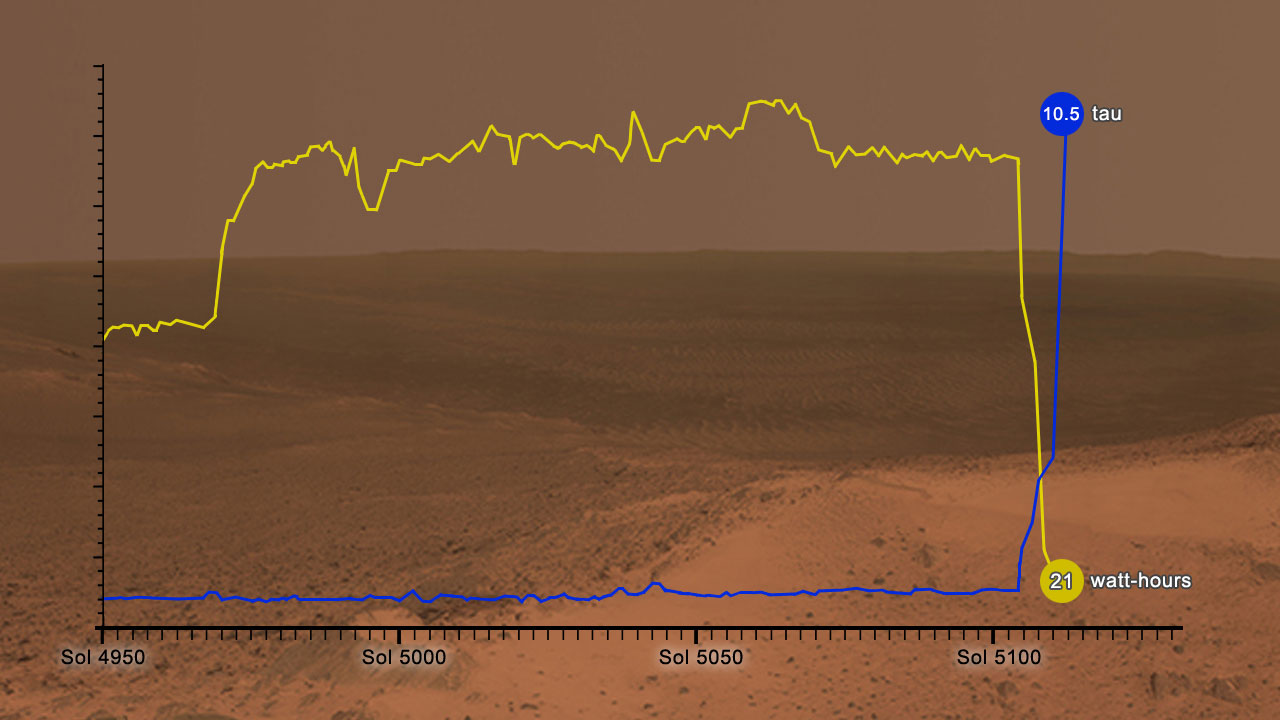On Mars, Light Is Energy

| Credit | NASA/JPL-Caltech/New Mexico Museum of Natural History |
|---|---|
| Language |
|
This graphic shows how the energy available to NASA’s Opportunity rover on Mars (in watt-hours) depends on how clear or opaque the atmosphere is (measured in a value called tau). When the tau value is low, plenty of sunlight hits Opportunity’s solar arrays and provides power to the rover. When the atmosphere becomes suddenly darker and more opaque (as occurred starting May 30, 2018), the rover’s power levels drop precipitously. The June 10, 2018, tau measurement (10.5) was higher than any previously measured on the Red Planet. Energy level on that day (21 watt-hours) was the lowest ever measured on Opportunity at that time.
The yellow line shows energy available to the rover in watt-hours; the blue line shows the tau value. The horizontal line presents several months of Opportunity’s operational life, numbered by the “sol,” or Martian day. The left side starts at Dec. 26, 2018 (the 4,950th sol of operations) and the end of the line on the right is June 10, 2018 (the 5,111th sol of operations).
NASA's Jet Propulsion Laboratory, a division of the California Institute of Technology in Pasadena, manages the Mars Exploration Rover Project for NASA's Science Mission Directorate, Washington.
For more information about Opportunity, visit http://www.nasa.gov/rovers and http://marsrovers.jpl.nasa.gov.

